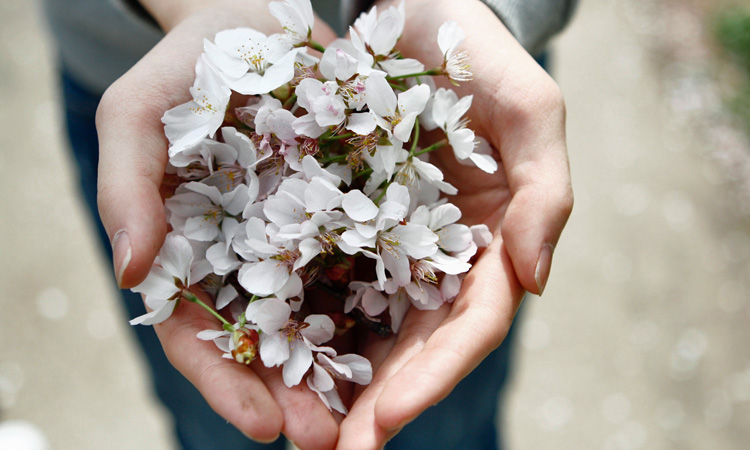“Joy in life comes from loving others and giving to others, not in being loved or receiving from others.”
-Joel S. Goldsmith
As much as we would all love to believe that joy actually comes from giving, deep down we probably don’t really believe this way (if we are honest with ourselves). This article explains why, as well as how we can learn to enjoy the benefits of truly giving to others.
When a Gift is not a Gift
Most of the giving we do in life in not true giving. True giving is an action that expects nothing in return. Note that even if you expect a “Thank you”, this is not true giving because you are expecting something for your “gift”.
False giving is done for ego purposes: what you are actually doing is “giving” in order to use others to validate that you are a good person. When someone says thank you, you feel good about yourself. When you give because you secretly hope for something later in return, the reason you gave was to prove that you are “worthy” of receiving a gift, and the recipient would be a jerk not to give you something back at a later time.
How False Giving Goes Wrong
Let’s say you have a friend who wants to borrow your motorcycle. The first time he asks, you gladly give it to him to show him what a great friend he is, and his expression of gratitude makes you feel good. But what happens when he comes back every week asking to borrow your motorcycle again?
After a few times, you find yourself in a bind. First of all, because he now appears to expect you to lend him the motorcycle, you can no longer feel good about it because he believes you should let him use it anyway. Secondly, you really didn’t want him to borrow it even the first time (what if he wrecked it?); you just wanted to prove that you were a good friend. And finally, now that he expects to use it, he will get angry when you refuse.
So now your ego is in a lose-lose situation. First of all, if you agree to lend the motorcycle, you won’t be thanked, which will lead to feeling resentment. And if you don’t agree, you will feel even worse because now he will be mad at your for not being a good friend, which will make you feel angry at him in return.
This is not to suggest that you should always give all the time. Instead, the point here is to recognize that what you normally think of as giving is not really giving, and this in turn is why it doesn’t truly feel good to “give”.
True giving
The essence of truly giving is to expect nothing in return. Once the gift leaves your hands, that is the end of it. If the person tells you “thank you”, that is a gift back to you and should be appreciated, not expected.
In general, the concept of true giving is easy enough to understand. But the real trick is: how can you actually give something without expecting anything?
True giving involves having a different mindset about the world and life in general. Most people believe in limitation; that in order to get ahead you must take something from somebody else. For example, for a person to become rich, it means that somebody else must become poor.
The alternative is to believe in unlimited abundance. The idea that there is an infinite supply of prosperity in the world, and being successful or prosperous does not take away anything from anyone else. This is not an easy concept to accept, especially at first. A wonderful place to start is by reading Louise Hay’s book You Can Heal Your Life.
Practicing True Giving
Here are a couple of simple exercises to help you to get in the proper mindset for true giving.
Exercise 1: every morning when you wake up, just spend a few moments of your day to be grateful for everything that you have. Do the same thing before you go to sleep at night.
Exercise 2: Spend about 5 minutes each day in silent contemplation “sending love”. The way you do this is the following:
- On your in-breath, imagine that you are breathing in love from the universe into your heart. If helpful, actually visualize loving energy coming from all around you and entering into your heart.
- On your out-breath, imagine sending the loving energy from your heart to a recipient.
When you start the exercise, I recommend first send the loving energy to yourself. I.e., let the loving energy spread to your entire body. Then send loving energy to family. Then to friends. Then to acquaintances. And then if you can, try sending loving energy to people you don’t like, or people who you think don’t like you.
This exercise is very useful because (1) the recipients (besides yourself) don’t know what you are doing so there isn’t any possibility of expecting anything in return and (2) sending love is a gift; you are truly giving something…akin to praying for somebody. And sending love in this way is something we can all do, regardless of who we are and what financial condition we are in.
Conclusion
Once we make gratitude and “silent giving” a part of our daily lives, we will have a solid foundation upon which to make true giving of our time, service, and material possessions more of a reality. And the more we are able to truly give out, the more joy we will receive in our lives.
Source:
Joel S. Goldsmith. Man Was not Born to Cry. Acropolis Books, Inc. 1998.

